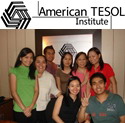Writing and Public Speaking
Central to the art of public speaking is the method used to prepare and deliver speeches. If we are sure we know how to go about preparing and delivering a speech, our fear subsides and we can lose ourselves in the preparation of our remarks. Good preparation will allow us to deliver the speech with confidence and often with pleasure The purpose of this article is to outline and explain the steps of a tried and tested method.
1. Determine the purpose of your speech. Good public speaking is purposeful. There should be a good reason for the time and energy spent in preparing, delivering and of course listening to the speech. The best measure of a speech is what it does for the audience. Therefore the speech purpose should be defined in terms of the audience reaction. To determine the purpose of the speech ask the question, "What do you want the audience to do as a result of hearing your speech?
2. Select the Central Idea of the Speec.h The careful selection of the central idea is one of the most important steps because a major goal of good public speaking is the communication of ideas. The central idea is the unifying factor of your speech. This is achieved by breaking the idea down into subdivisions which can be used as headings for your speech.
3. Selecting the Means of Presenting the Central Idea. Once the central idea has been decided on the speaker is ready to select the means most appropriate to his task. Depending on the task the speaker will select one of, or, a combination of the following means;- Humour - should they joke with the audience Narration - tell a story Exposition 'present data Justify- argument Motivation - appeal to the audience's emotions
4. Researching Information to Support Your Ideas. There are 4 general sources that the speaker may go for help and generally in the following order (i) From himself - the knowledge and experience they have already gained (ii)Reading/Watching - from various sources e.g. internet, books, films (iii) Talking with others - interviewing by phone or face to face (iv)Writing or emailing for data
5. Selecting and Arranging Your Research (Outlining.) It will be usual if your research has been thorough that you will have more data than you can use for your speech. You will then have two problems. The first is what you should keep. The second is what order will you present the material. You will principally refer to the central idea to select the material to include in the speech, based on the relevancy of the material. The secondary points to consider in selecting the items to present are: (i) What is the most interesting? (ii) What is the emotional impact? (iii) Which is briefest? (iv) Which is most illustrative? (v) Which has the most authority?
The arrangement of the materials follows a 3 part process to prepare a working outline; (i) Into 3 parts 'introduction, body and conclusion (ii) Headings arranged into a logical order (iii)The material put in order to support the heading
6. Practicing the speech. Like a play you should deliver your speech several times in front of friends and if possible in the room where it is to be delivered. The closer the practice conditions and surroundings are to the actual conditions you will face the better prepared you will be for the actual delivery of your speech. You should practice your speech until you become familiar with it but not so often that it is committed to memory. You should not commit to memory because you will probably lose the conversational quality of the speech and the speech becomes inflexible.
7. Delivery Of The Speech. A speech should be seen as a sincere effort to communicate and this is done best in a direct, conversational, and lively delivery. It is a sincere effort to communicate not an act or a performance. Approach the position you will speak from enthusiastically. Take a firm but comfortable stance. Your hands should be at your side except when you are gesturing. It is good to move to enhance an idea or relieve any tension you may be feeling.
The main component to the art of speaking excellence is the communication of ideas. The method outlined here will enable you to present your ideas effectively and with confidence.
Edward Hope is editor and publisher of the recently released ebook "The Art of Great Conversation." To claim your free preview visit www.selfconfidentspeaking.com.














